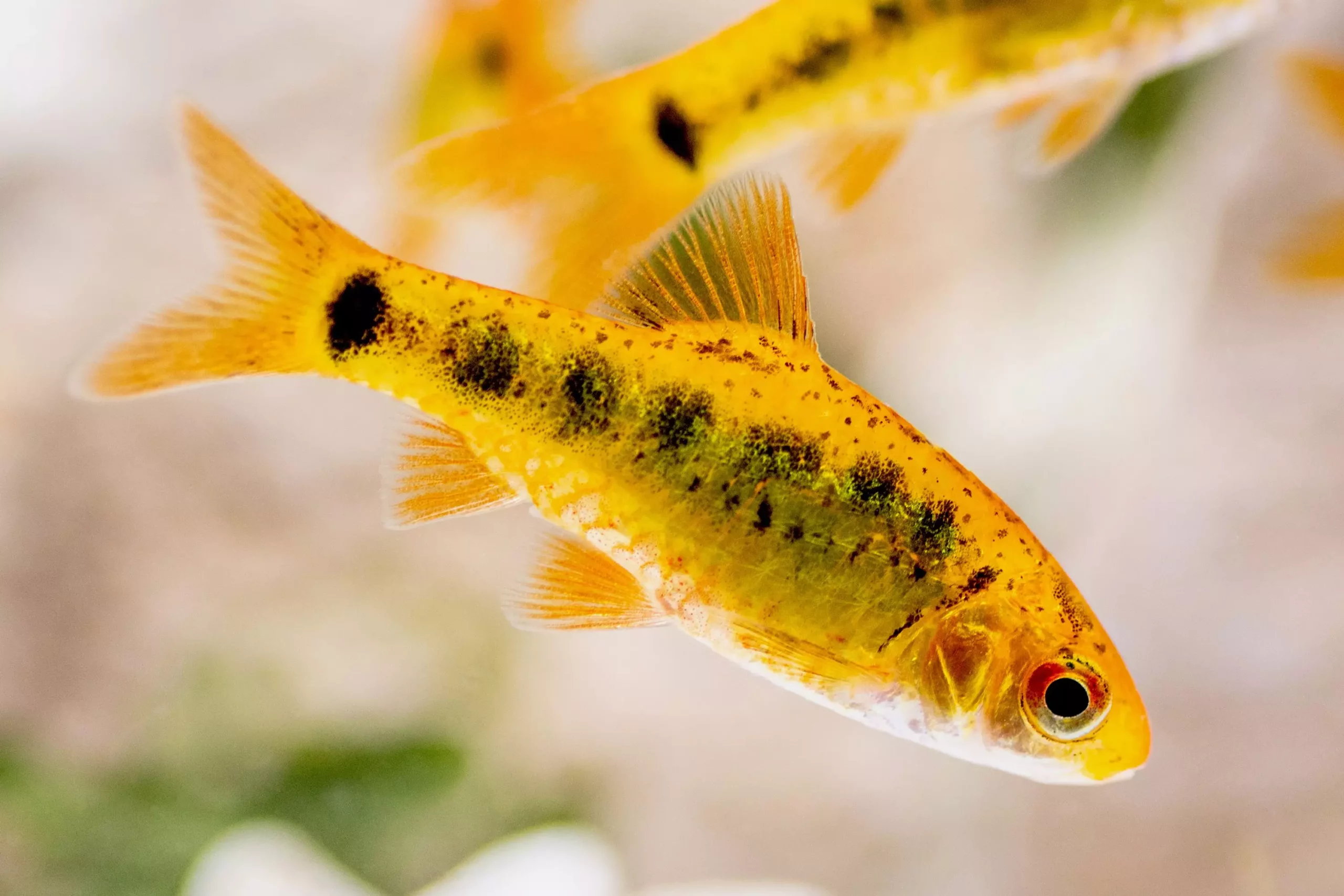Barb fish, known for their lively nature and striking colors, are a favorite among aquarium hobbyists. These fish not only add visual interest to tanks but are also relatively easy to care for, making them ideal for both novice and seasoned aquarists. In this article, we’ll explore various species of barbs, providing insights into their characteristics, habitat preferences, and compatibility with other fish, which will enable you to make informed decisions when selecting the right fish for your aquarium.
Black Ruby Barb: A Stunning Addition
Among the plethora of barb species, the Black Ruby Barb stands out with its vivid deep red coloration that particularly shines during breeding seasons. Known scientifically as **Pethia nigrofasciatus**, this fish is not just visually appealing; it thrives in peaceful environments and enjoys the company of its own kind, requiring a minimum school of five. Its compatibility with similarly sized barbs, like the Tiger Barb, enhances the overall aesthetics of a community tank. The Black Ruby Barb reaches an average length of 2.5 inches and can live for about five years. To ensure optimal health, they prefer a tank size of at least 20 gallons, with a pH range of 6.0 to 6.5 and temperatures between 72°F and 79°F.
Another captivating species is the Denison’s Barb, or **Sahyadria denisonii**, commonly referred to as the Bleeding Eye Barb. This fish can grow to a size of 6 inches and is well-suited for larger aquariums, with a recommended minimum tank size of 55 gallons. Known for its striking appearance and peaceful demeanor, it thrives among other similar-sized schooling fish. The Denison’s Barb has a lifespan of over five years, making it quite appealing for long-term aquarium keeping. It prefers a slightly alkaline environment with a pH range of 6.8 to 7.8 and temperatures between 60°F and 77°F.
The Gold Barb, or **Barbodes semifasciolatus**, is a favored choice for beginners due to its resilience and adaptability. While they often appear in vibrant gold color, these fish are naturally green in the wild. Gold Barbs grow to around 3 inches and are best kept in groups of six or more, adhering to the community fish philosophy. They flourish in environments with a pH of 6.0 to 8.0 and temperature ranges between 64°F and 75°F. Their harmonious nature allows for cohabitation with other peaceful species, making them a versatile addition to a community tank.
Famous for their warmth and liveliness, Rosy Barbs (**Pethia conchonius**) add energetic charm to any aquarium. These larger barbs can grow up to 6 inches in length and thrive in newly established tanks due to their hardy nature. Although they are generally peaceful, they are known to nip at other fish, particularly those with long fins. Therefore, careful consideration is needed when selecting tank mates for Rosy Barbs. With a lifespan of about five years, they prefer a minimum tank size of 30 gallons, with a pH of around 6.5 and temperatures between 64°F and 72°F.
Tiger Barb: The Classic Favorite
Tiger Barbs (**Puntigrus tetrazona**) are perhaps the most recognized members of the barb family. Their bold pattern and vibrant behavior are complemented by a propensity for fin-nipping, which poses compatibility issues with slower-moving fish. These fish flourish best in well-planned schools, preferably with other active species to channel their energies constructively. Reaching lengths of 3 inches, Tiger Barbs are relatively easy to care for, requiring a tank size of at least 20 gallons, a pH of 6.5, and a temperature range of 68°F to 79°F.
On the larger end of the spectrum lies the Tinfoil Barb, or **Barbonymus schwanenfeldii**. Attaining sizes of up to 14 inches, this species demands ample space—ideally a tank of 55 gallons or more. Despite their substantial size, Tinfoil Barbs are peaceful and thrive well when kept with other large fish species, such as cichlids or silver dollars. These fish prefer a pH of approximately 6.5 to 7.0, temperatures between 72°F and 77°F, and can live up to 15 years, making them long-term companions for aquarium owners.
The world of barb fish offers a diverse range of options for aquarium enthusiasts. Each species has distinct needs regarding tank size, water conditions, and compatibility with other fish. Therefore, understanding these traits is crucial for creating a harmonious aquatic environment. Whether you opt for the eye-catching Black Ruby Barb or the dynamic Tiger Barb, ensuring proper schooling and suitable tank conditions is paramount to their health and longevity. As you explore adding these vibrant fish to your aquarium, consider their compatibility and environmental requirements to create a thriving community that brings joy to your underwater world.

